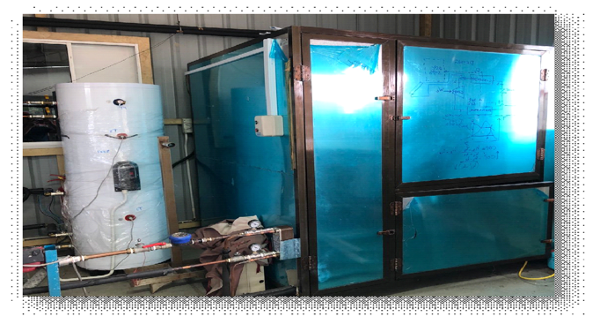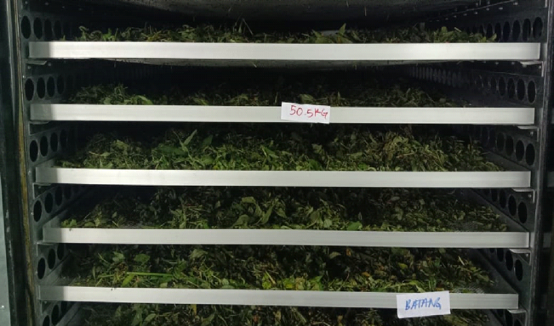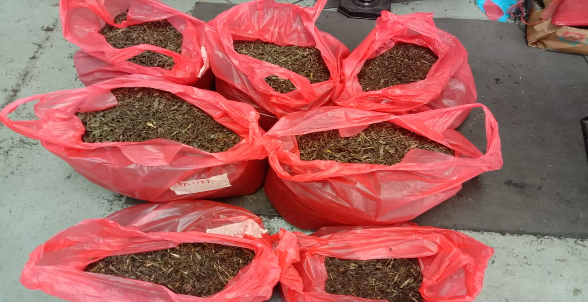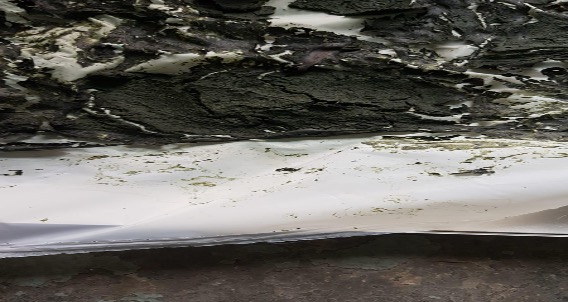

Ensure access to affordable, reliable, sustainable and modern energy for all
SDG 7 Indicator
7.4 – Energy and the Community
7.4.5 – Assistance to Low-Carbon Innovation
Universiti Kebangsaan Malaysia (UKM) is driving low-carbon innovation through the development of its Heat Pump Solar Dryer, a cutting-edge solution combining solar energy and heat pump technology to provide an energy-efficient drying method for agricultural and marine products. This system drastically reduces reliance on fossil fuels, minimizing carbon emissions while preserving product quality. By offering eco-friendly alternatives for drying high-value crops. Besides, UKM had established Geothermal Resources Sdn. Bhd. (GRSB) is a one stop center for geothermal solutions and focused on prefeasibility, exploring, feasibility studies and mapping geothermal energy sources in Malaysia. UKM not only supports sustainable practices in agriculture and aquaculture but also exemplifies its commitment to fostering a low-carbon economy. This technology empowers industries to meet environmental standards while ensuring product safety, quality, and profitability.
Smart Heat Pump Drier
Development of Smart Heat Pump Drier to solve problem related to open air drying of agricultural crops. This technology has generated income to UKM about RM 22,000 for year 2023.
Source: https://ukmace.com/technologies/heat-pump-solar-dryer/
Heat Pump Solar Dryer: Supporting Low-Carbon Innovation
Technology Overview
This heat pump solar dryer combines a solar collector and heat pump system to provide a low-carbon, energy-efficient drying solution. It uses air and refrigerant as working fluids for the solar collector and heat pump systems, respectively. The heat pump comprises four main components: the evaporator, expansion valve, condenser, and compressor. The system operates in three modes, (a) combined heat pump and solar collector; (b) solar collector only; and (c) heat pump only allowing for continuous, efficient drying or dehumidifying. The drying chamber holds products in trays, while ambient air, induced by a fan, flows through the solar collector, which is heated by incoming solar radiation. This heated air enters the drying chamber, absorbing moisture from the product. Moisture-laden air then moves to the evaporator, where water vapor is effectively removed, and conditioned air is directed back to the condenser and solar collector, increasing temperature and optimizing dehumidification. This innovative design enhances drying efficiency while minimizing energy use, contributing to low-carbon industrial processing.
Inspiration of the Invention
There is an urgent need for environmentally friendly and energy-efficient technology to produce high-value dried products. Traditional drying methods often rely on fossil fuels and high-temperature processes, which consume significant energy and produce greenhouse gas emissions, negatively impacting the environment. In contrast, an eco-friendly, energy-efficient drying technology would not only reduce the carbon footprint of production but also preserve the nutritional quality, texture, and color of high-value products, such as herbs, fruits, and specialty foods. Such technology would cater to the growing demand for sustainably produced goods, allowing industries to meet both consumer expectations for high-quality products and regulatory standards for environmental responsibility. This shift toward greener, more efficient drying methods is essential for fostering sustainable practices across sectors and supporting the global movement toward low-carbon innovation.
Problem Statement & Current Issues
The traditional method of open sun drying poses several significant risks that compromise product quality and safety. Products left to dry under open sun are exposed to environmental contaminants, including dust and dirt, leading to lower quality and potential health hazards. Additionally, open drying is highly susceptible to insect and microbial infestation, as the prolonged drying time and lack of controlled conditions create an ideal environment for bacteria, mold, and pests to thrive. This exposure not only increases the risk of spoilage during the drying process but also reduces shelf life during storage, often resulting in substantial post-harvest losses. Furthermore, weather fluctuations, such as unexpected rain or high humidity, can disrupt the drying process, leading to uneven drying and a lack of consistency in product quality. These challenges make open sun drying inefficient and unreliable for high-value products, underscoring the need for advanced, controlled drying technologies that enhance both safety and quality.
Inventiveness & Novelty
- The solar collector has several heat transfer enhancement features such as dual pass, fins, and integrated storage system that improve efficiency.
- The heat pump has dual condenser with high coefficient of performance
Usefulness & Application
- Environment friendly system – The use of fossil fuel for drying will result in environmental degradation.
- Energy Saving and low risk.
- Highly profitable business (2 – 6 months payback period).
Impact of the Product
High value products – high quality dried fruit for cereal to heat sensitive medicinal herbs, almost all agricultural to marine products
Market Potential
- The solar assisted heat pump solar dryer unit is an efficient method for drying and dehumidification of agricultural and marine products.
- Sales of Dried Food Product for Malaysia in 2020 – (RM 4000 million).
TRL : 7
Market Potential
- Plantation for water holding materials/fertilizer.
- Sanitary and hygienist: diapers, absorbance sheets (hospital use) etc.
- Plant pot and decorations.
TRL : 5
https://ukmace.com/technologies/heat-pump-solar-dryer/
Figure below showcase UKM innovative Solar Heat Pump Dryer and smart drying rack technology, which exemplify low-carbon solutions for drying agricultural and marine products like Kesum leaves and microalgae. By utilizing solar energy and energy-efficient drying methods, these technologies drastically reduce reliance on conventional fossil-fuel-based drying, minimizing carbon emissions and energy consumption. This approach not only preserves the quality and value of high-grade products but also supports sustainable practices in agriculture and aquaculture. UKM efforts in developing and implementing these drying systems highlight its commitment to advancing low-carbon innovation, providing industries with eco-friendly alternatives for processing high-value crops.




Geothermal Resources Sdn. Bhd.
Technology Overview :
The project is led by Prof. Madya Ts. Dr. Mohd Hariri Bin Arifin from Department of Earth and Environmental Sciences Faculty of Science & Technology, Universiti Kebangsaan Malaysia (UKM). Geothermal Resources Sdn. Bhd. (GRSB) is a one stop center for geothermal solutions and focused on prefeasibility, exploring, feasibility studies and mapping geothermal energy sources in Malaysia established in 2022. This company is committed to advancing the understanding and utilization of geothermal energy in the region, contributing to renewable energy solutions and environmental sustainability. GRSB has a fully equipped geothermal lab in UKM Bangi and collaboration with various academic and industry experts.
Philosophy : At Geothermal Resources , we hope one day it will be in use in everyday aspects of life
Expertise : Our team of highly trained and experienced professionals and latest technology in the industry.
Facilities : At Geothermal Resources , we believe that hot springs can provide cascading benefits from renewable energy , wellness and other benefits
Source : https://geothermal-resources.com/



